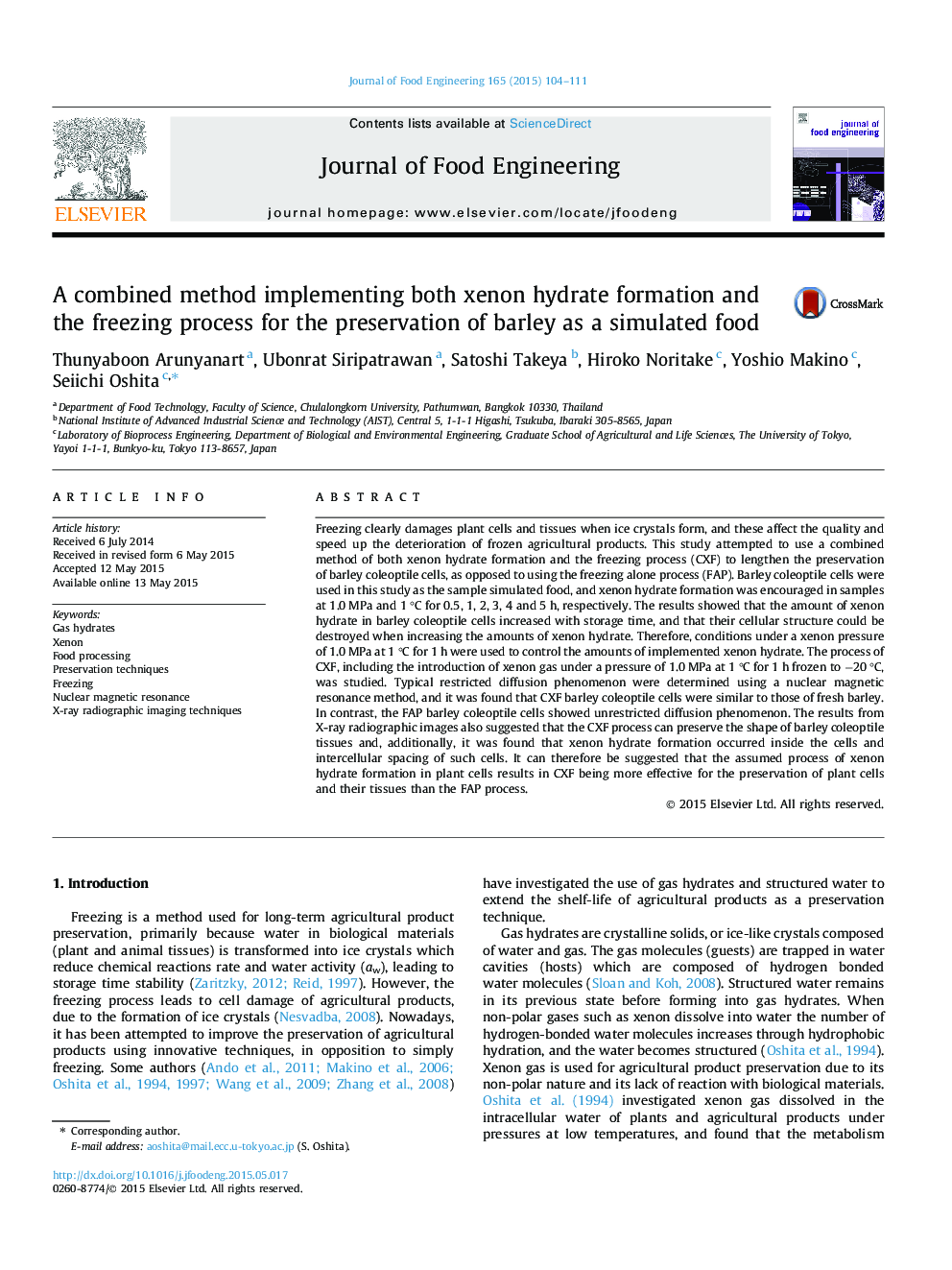| Article ID | Journal | Published Year | Pages | File Type |
|---|---|---|---|---|
| 6665289 | Journal of Food Engineering | 2015 | 8 Pages |
Abstract
Freezing clearly damages plant cells and tissues when ice crystals form, and these affect the quality and speed up the deterioration of frozen agricultural products. This study attempted to use a combined method of both xenon hydrate formation and the freezing process (CXF) to lengthen the preservation of barley coleoptile cells, as opposed to using the freezing alone process (FAP). Barley coleoptile cells were used in this study as the sample simulated food, and xenon hydrate formation was encouraged in samples at 1.0 MPa and 1 °C for 0.5, 1, 2, 3, 4 and 5 h, respectively. The results showed that the amount of xenon hydrate in barley coleoptile cells increased with storage time, and that their cellular structure could be destroyed when increasing the amounts of xenon hydrate. Therefore, conditions under a xenon pressure of 1.0 MPa at 1 °C for 1 h were used to control the amounts of implemented xenon hydrate. The process of CXF, including the introduction of xenon gas under a pressure of 1.0 MPa at 1 °C for 1 h frozen to â20 °C, was studied. Typical restricted diffusion phenomenon were determined using a nuclear magnetic resonance method, and it was found that CXF barley coleoptile cells were similar to those of fresh barley. In contrast, the FAP barley coleoptile cells showed unrestricted diffusion phenomenon. The results from X-ray radiographic images also suggested that the CXF process can preserve the shape of barley coleoptile tissues and, additionally, it was found that xenon hydrate formation occurred inside the cells and intercellular spacing of such cells. It can therefore be suggested that the assumed process of xenon hydrate formation in plant cells results in CXF being more effective for the preservation of plant cells and their tissues than the FAP process.
Related Topics
Physical Sciences and Engineering
Chemical Engineering
Chemical Engineering (General)
Authors
Thunyaboon Arunyanart, Ubonrat Siripatrawan, Satoshi Takeya, Hiroko Noritake, Yoshio Makino, Seiichi Oshita,
